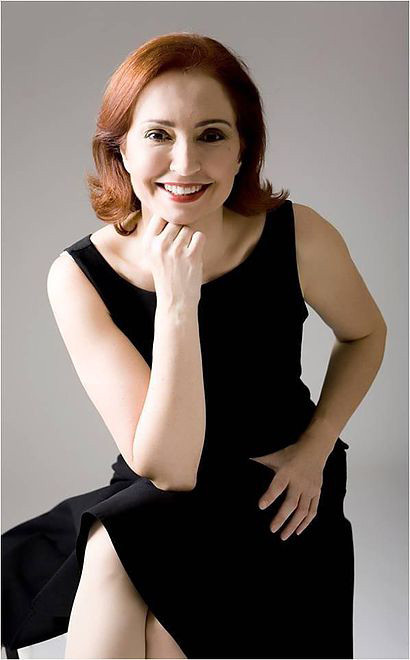
Being a female plastic surgeon gives me a certain advantage, as most of my patients are females. They often find it easier to speak to me than to a man, and perhaps I also, being a female myself, have a better understanding of their problems.
Cosmetic surgery which is a subspecialty of Plastic and reconstructive surgery, is something that can help many unhappy women as well as men. Ageing is sometimes a problem, when it changes the features and characteristics of a person’s face. We live in a highly competitive world, where a person can find himself/herself being put out of work simply because they are perceived to be too old. Sometimes it is not a question of being too old, but rather that they are looking tired, sad or angry. Aesthetic surgery to the face, like a facelift, a browlift or surgery around the eyes, can take this impression away and replace it with an open and alert look.This can prolong the working career with many years
Many women find that their body is losing the sexual appeal after several pregnancies. Plastic surgery can restore their abdomen, breasts and vagina. From my point of view this is not purely cosmetic surgery, but rather reconstructive surgery. My experience has taught me that this is a very important area concerning women’s self-respect and confidence. It is also an important part of keeping their marriage alive and vibrant. One of my patients once told me, that if children were born by men, all the reconstructive surgery I mentioned above, would be included in a normal health insurance a long time ago.
Aesthetic surgery is not something new as many people think. The technique of doing a rhinoplasty was developed in India more than 5000 years ago. We also know that many aesthetic surgeries we perform today, was done by the Egyptians many thousand years ago. Tattoos and scarification has been practiced by ancient tribes for the sole purpose of beautification of the body.
So what we do today is nothing new under the sun. The only thing which is new, is perhaps the intolerance that some people are showing those who want to improve their situation with the help of aesthetic surgery.
From my point of view, aesthetic surgery is a far better investment in your own body, then spending the same amount of money on a new car, clothes, cosmetics or smoking. Aesthetic surgery today, should be viewed as an alternative to other consumable goods.
Properly done by an expert, done for the right reasons, it is very likely that the result will bring joy and happiness and create a lifelong harmony. Very few of the alternatives will give you the same satisfaction, and certainly not for the rest of your life.
However we are not talking about buying a ready product, but we are talking about surgery to the body, which has potential risks and should not therefore be taken lightly. It is very important that you select a surgeon with the right qualifications within the field of plastic surgery, and with a long experience from the surgery that you are contemplating. It is likewise important that you are fully open about your expectations you have about the surgery. A good surgeon who feels that he or she cannot meet your expectations, will tell you so.
The first consultation with the surgeon is therefore of paramount importance, and cannot be replaced by fancy websites and smart marketing. If you feel ever so hesitant after consultation, it is my strong advice that you should have an other consultation for a second opinion.
Very small I underwent surgical interventions and I found that the surgeons were experts of a great skill, and that the OR room was wonderful, despite the anesthesia gases which did not smell good and made me feel sick. So, I chose my profession by saying to myself "I too want to repair peoples bodies".
Later, I found my vocation by discovering plastic surgery that repairs and reconstructs the human body and self-image.
The surgical procedures are exactly the same. Bur the difference should be underlined: reconstructive interventions are in theory reimbursed by Social Security (but many are not) whereas aesthetic interventions are never. We speak of reconstructive surgery in cases of more or less serious illnesses or accidents: for example, a limb has been amputated or a muscle has been crushed. We will then resurface the skin and resymmetrize the limbs, that is to say, put back, ad integrum, things in place as they were before.
This is what we do for women who have had breast cancer with amputation. We reconstruct the missing breast and make aesthetically beautiful once again. It is not only a question of having two breasts but of having two approximately symmetrical breasts - even if symmetry does not exist in nature - so that the breast is good to look at and that it allows the woman to dress normally, to live normally.
The fundamental importance of breast reconstruction is to repair the body image, the image that the woman has of her body, she will therefore be able to assume her femininity, to undress in front of her partner, to put on a bathing suit at the beach. When you don't have breast reconstruction, you might really feel disfigured.
I would add that if very pathological situations fall within the scope of reconstructive surgery, after having the issue fixed, we can put the aesthetic finishes to it. We then complete the work with aesthetic procedures while seeking to achieve the best possible result. Later, I found my vocation by discovering plastic surgery which repairs and reconstructs the body and self-image.
We can do a lot of things, but it is enough to have a right idea of the needs of the person in front of you, whether it is a man, a woman or a child, and then to make different suggestions that show how we can make improvements.
Today, more and more people need to improve their physical appearance to feel good, feel beautiful and dynamic, and above all to please themselves in order to regain some self-confidence. Faced with the real suffering that body defects can generate and the multiple solutions that cosmetic surgery offers, we cannot speak of it as useless or futile acts.
Recently, I operated on a lady after repairing her breasts over twenty years ago. For this woman with a face strongly marked by years of grief and worry, I carried out a head and neck lift.
Generally, this is done for what is called excessive aging or pathological aging. She said to me: "You really repaired me psychologically. All my life I found myself ugly, my father found me ugly, my first husband abused me physically and morally. I struggled a lot to free myself, but this last intervention completes my rebirth. Now I feel beautiful and entitled to love "- these are her own words.
Body repair involves multiple elements. Of course, one can repair oneself psychologically by doing an analytical work or by consulting a psychologist or a psychiatrist, but cosmetic surgery can also intervene in a beneficial way when one has after-effects of childhood mistreatment.
Cosmetic and restorative surgery is everyones concern, for example the little boy who has big ears and everyone in school calls him Dumbo like in the Walt Disney movies. There is nothing funny about it, there are children who refuse to go to school or who, every day, have a stomach ache because they are being bullied for their looks by the others, and one can only imagine how can it be for the people with physical flaws or handicapped. To help them overcome their issues, cosmetic surgery is really effective.
In a society where appearance plays a major role, aging is always frowned upon. There are men who have suddenly aged. Some, still young, already look old, a disadvantage in the world of competition. Others, passing the milestone of their sixties, know that they still have to work for ten or fifteen years more because they have a profession that requires being in public. In this respect, surgery has a social meaning. While many have a body that does not match the energy and alertness of the spirit within them, surgery can erase the traces of age and put the body and mind in balance.
And of course, I see a lot of women. Why? Because from a certain cultural point of view and whatever their geographical origin, women have always been asked to keep their partners, to stay beautiful, to take care of their families, their children; these diktats still exist today. Women feel need to fit in a more or less standardized beauty niche to feel good about themselves. But the beauty goals can be quite simply: "I was fine when I was forty years old, cosmetic surgery will certainly not give me back my forties, but I can at least feel better as if I slowed down aging".
It all depends on who the doctor is. Our approach is a bit like that of a general practitioner or a psychologist. We sit, we watch, we wait. "What can I do for you?"
There are people who have thought about it deeply, they have already consulted one or two professionals and perhaps they feel confident but underneath that they tell you how much they have suffered and how they want to put an end to this body image that does not match their self-image.
Other patients don't feel well, but they don't know exactly what they need. As a therapist, I have a mission to give a thorough consultation. Patients may be asked to bring pictures of him or her when they were younger, or pictures from last year before the accident, or anyone they like. From there, a discussion begins to better understand what seems to them to be changed, what does beauty mean for them. We are trying to find out, for example, what a woman would like for her breast, even if it is a reconstruction of the breast after cancer, we have a choice because there are many different treatments possible:
"What would you like? What shape of breasts do you dream of, their size?"
Then I can say "yes, we can do it" or "no, we can't do it". The patients I have operated on always know that the procedures performed are exactly what's needed and that we will get to the most natural-looking result.
When we look at a human being, natural is a set of images that correspond to certain social and cultural criteria. This explains why we are not going to make the same nose to everyone. There is no such thing as standard plastic surgery, it must be beautiful both according to general criteria and those ideas that are specific to the patient. If a patient has very short hair when in her country where most women have very long hair, this is a peculiarity to be respected. Working with natural beauty is trying to improve your form with the respect to it. I don't like to talk about "results" but the goal is to achieve an overall improvement, of the face for example, and that it has natural look.
In fact, for patients and for me, the idea of looking natural is best described by the situation when people around do not realize the medical intervention/ When they look at you, after a facelift, and they tell you: "you look good, you look relaxed and rested".
A French patient is very different from an American patient. American women often (but not all!) need to be very fit, very lifted, to have very aggressive breasts. Likewise, in South America, breast size requested by American patients is larger than that of a French woman for whom a 95C is the ideal breast size. In the 70s, the model was that of the English model with very small breasts and then we evolved towards much more voluptuous breasts. But they have nothing to do with certain South American I,ages where breast prostheses are ofter of 500 or 600 ml of volume. Me, I wouldn't do that, except for a patient who is 1.90 m and 85 kg and has had a breast amputation. There, we can replace her breast with a 600 ml prosthesis. When a patient seeks treatment with those kinds of results, I do not refuse to treat her but I explain that it seems excessive to me. Either I can't do it or it doesn't make sense to me. At this time, I usually give another address to the patient. It’s also a matter of female sensitivity. Some women seek a female doctor for this too.
It all depends on its degree of success, but the operation must be felt successful for the surgeon and the patient, especially for the patient. It is a determined success when a patient feels metamorphosed, when she feels good with herself, when she says to herself "here, I start a new page in my life, I am 55 years old but my breasts are lifted "or" I had breast missing after a lumpectomy and now I have it back ", or even" I no longer have these awful wrinkles when I lower my face to read, I no longer have this crumpled neck thanks to my head and neck lift ". These are successful interventions.
It also happens that the result might be already perfect for the patient, when we could have done a lot more yet. We have abilities that could further improve the patient, but some, during their reconstructive procedures, stop. For example, for many breast operations, women find it difficult to go all the way. They do not do the final reconstruction of the nipple, or they wait several years because they need to have changes according to their pace. Some want a complete and immediate reconstruction, which will require several surgical procedures to be performed as quickly as possible, others take very substantial poses in their treatments. Finally, in rare cases, the intervention is successful but the patient is still in demand because she or he suffers from chronic dissatisfaction not necessarily detected before the operation.
They cover everything related to facial rejuvenation, whether medical or surgical, and everything related to body shaping and harmonization.
It is true that it is a lot. I see a lot of men and women with major or moderate obesity and women who, after multiple pregnancies, in need to repair the appearance of their private parts, their belly, their breasts. The abdominoplasty after pregnancy is in great demand too. Breast reconstruction is also one of my specialties.
In remodeling, I offer a lot of lipofilling, that is to say that when I remove their own fat to make a person slimmer, instead of throwing it away, I then reinject it where it is needed. This natural fat, rich in stem cells and growth factors, helps to create beautiful skin. We also have chemical peel procedures that improve the texture of the skin. It’s used mostly in cases of excessive aging due to sun burns or the after-effects of acne scars, and we also repair deep wrinkles or crumpled skin, that is called aggravated aging of the face. All these pathologies can be fought by chemical peel of the skin, injections of fillers or botulinum toxin or even a face lift.
Today, with consent of the patient, we are trying to conserve retrieved fat instead of throwing it away. Why? Because at a certain age in life, the tissue sags, the skin relaxes and loses its structure. The fat reinjected under the skin can give it a boost it and stimulate the synthesis of collagen and elastin thanks to the presence of stem cells. We therefore need to keep certain amount of fat for later procedures. With those growth factors, we can also enrich the serum with stem cells which we use as a repairer for dystrophic and painful scars, especially after accident or irradiation of the breasts, or after obstetric trauma through a difficult childbirth. Plasma enriched with growth factor, PRP and stem cells can also be used for a face lift. These are truly innovative techniques that can be applied to cosmetic and reconstructive surgeries.
In surgery, recent advances are new implants, certain belly repair plates or other areas of the body that are more efficient, and all the treatments that will improve the quality of our skin and our tissues in general.
When you go to a Congress between Doctors, you always learn something, these are the moments of sharing of knowledge and experiences for a cosmetic surgeon. There is also a knowledge transmission that works in both directions. This is called Continuous Education.
In the Congresses in which I participate, I often deal with new techniques that emerge, but when we say, "new techniques", potentially it means "new complications". We must therefore remain extremely careful. Tightening threads, for example, a non-surgical technique, can have a regenerating effect on the face of a young 40-year-old woman. But you have to check that the wires are well absorbable and not too thick. Otherwise, they do not integrate into the skin and may eventually extrude. When using a new technique, you should know that there are advantages and disadvantages.
I participate in particular in the discussions about complications inherent in injectable fillers, my main specialty. We use it very often. Certain pathologies can lead us to use fillers, for example for HIV + patients, men and women, affected by an atrophy of facial fat or lipoatrophy which is extremely psychologically and socially disabling: the face takes on an emaciated appearance while the person is feeling healthy and strong.
I always insist on the consequences of multiple pregnancies, it is very important because we can really repair the body and there are many women who cannot benefit from it because they do not have the information, in particular the possibility of repairing the breasts, the belly but also the external genital organs. This helps to boost the love-life of a couple, it allows a woman who has had difficult deliveries to feel better in her private sphere and in her daily life, in short to help to fight the pressure society puts on the female appearances.
It happened before that I operated on children for facial malformations and then, it could be babies of one month but those are very specific cases. In my current practice, I operate on children 6 years old for protruding ears or even younger for a facial sore, due for example to a bite. But I can also intervene on 85-year-old patients, if the heart holds and if they want to maintain themselves, to feel good, it must be done.
Yes, I am a fan. It fascinates me, we practice wonderful medicine in France, and I hope that we will be able to keep the medical practice of high quality.



